A big muley on restricted land tempts the hunter to take a high risk shot if he moves to a narrow opening on public land. It’s a 300 yard shot with a 10 yard window for success – Do you take the shot?
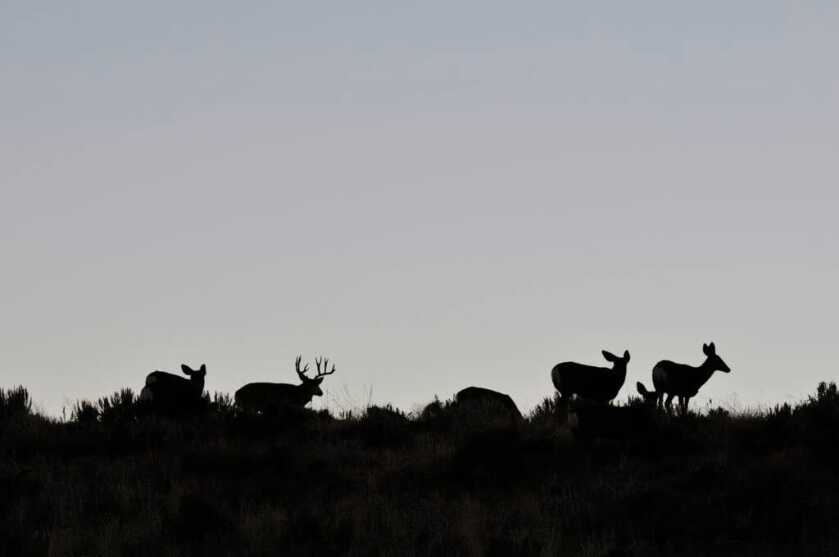
SHOOT OR DON’T SHOOT?
As dawn shepherds darkness from the fields you spot the telltale dark blobs that are deer, feeding their way toward cover and daytime bedding areas. Shooting light arrives, and you urgently scan the fields for the big buck you’ve been hunting since opening day. Then there he is, grazing with several other bucks. He’s on off-limits property, but at least you finally have him spotted. Then he begins to move. He’s headed for a property you can hunt – but the problem is, you’ll only be able to see him for a short ten yards after he jumps the fence and before he disappears into a brushy draw.
Following three smaller bucks, the big buck makes his way to the dividing fence. You hit them with your rangefinder; they are exactly 351 yards distant. There is no discernable wind. You crank the dial on your scope to 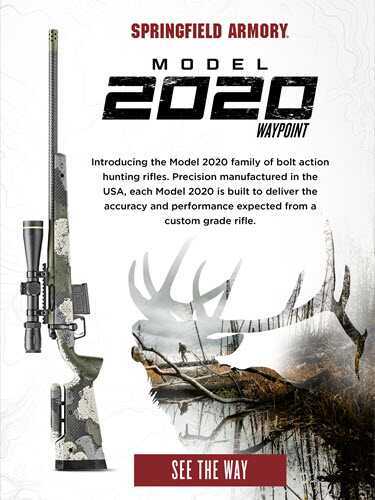 the 350-yard mark. Then the three smaller bucks jump the fence and are soon swallowed in the brushy draw. The big one lingers, and you’re in an agony of doubt. Will he jump? If he does, will you get a shot? He’s awfully close to the border, should you even try? Then it happens; he hops the fence, walks five yards, and stops to browse. You can see him clearly through the scope, though only the top half of his body shows above the sage. This is the first shot opportunity you’ve had in a week of hunting, and likely the only one you’ll get.
the 350-yard mark. Then the three smaller bucks jump the fence and are soon swallowed in the brushy draw. The big one lingers, and you’re in an agony of doubt. Will he jump? If he does, will you get a shot? He’s awfully close to the border, should you even try? Then it happens; he hops the fence, walks five yards, and stops to browse. You can see him clearly through the scope, though only the top half of his body shows above the sage. This is the first shot opportunity you’ve had in a week of hunting, and likely the only one you’ll get.
TIME IS RUNNING OUT.
You drew a tag in Utah this year, in a unit known for producing great bucks. Opening day your buddy whiffed a shot on one, his bullet just grazing the top of its shoulders. The buck went into hiding, and you’ve been searching for him ever since.
The weather has been perfect; crisply chill in the morning, with just a hint of frost atop the clover. Middays have been warm, comfortable enough to make you hunt some shade and a nap. Evenings have been beautiful, watching herds of mule deer pour out of the draws and off the mesas to feed in alfalfa fields, cleaning up what the farmers left behind when they baled the final crop of the year. Some of those farmers have given you permission to hunt on their land, and there are a few parcels of public land you can hunt as well. It’s been great, but with just one more day left of the season, your time to hunt is almost up, and your finger itches for the feel of the trigger.
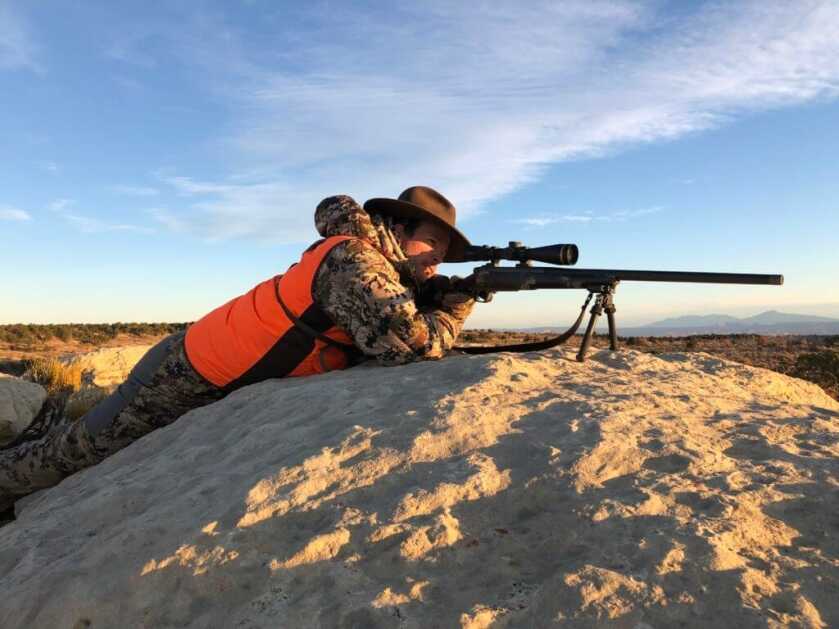
RIFLE SETUP
Your rifle is an elite product of the gun maker’s art. It’s a lightweight model chambered in 6.5 PRC. The barrel is slightly longer-than-standard, sporting 24 inches of gleaming carbon fiber and stainless steel. Twist rate is 1:7.5. It’s the most accurate rifle you’ve ever owned, and shoots your Hornady ammo into tiny sub-half-moa groups anytime you can get yourself together enough to shoot that good. An Atlas bipod and a lightweight rear shooting bag helps meet that challenge.
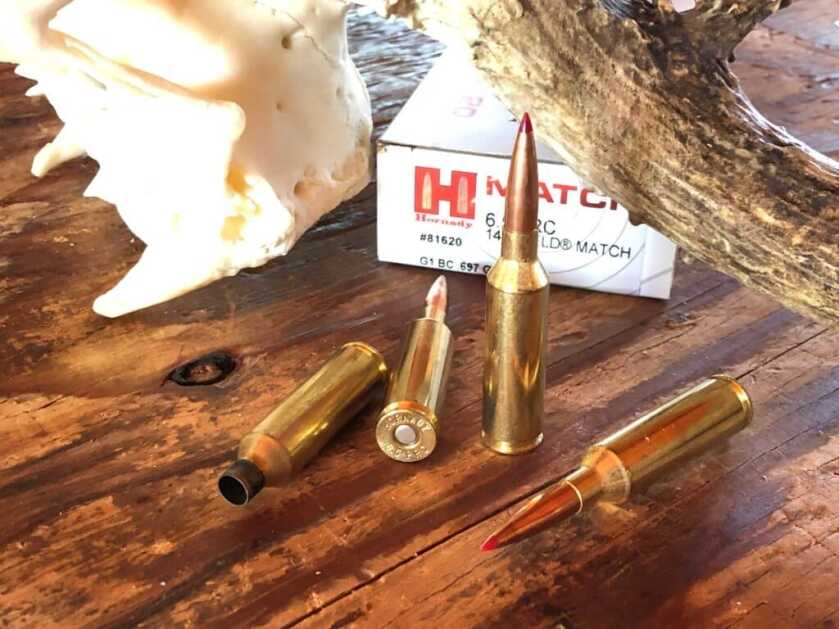
The ammo you are shooting is a bit controversial for hunting. It’s Hornady Match ammo, topped with their 147-grain ELD-M bullet. It’s a “soft” cup-&-core bullet, tipped with Hornady’s proprietary heat and friction resistant tip. You’ve had good luck with it on deer-sized animals and, despite the controversy, have complete confidence the bullet will give you satisfactory terminal performance on a mule deer. The bullet sports a radically good G1 BC (Ballistic Coefficient) of 0.697, and exits the muzzle at 2921 FPS (Feet Per Second). You’ve zeroed the rifle at 200 yards, gathered ballistic data, and formulated a drop-chart for use at 7000 feet elevation and 50 degrees; generic numbers for the area and temps you’re hunting in.
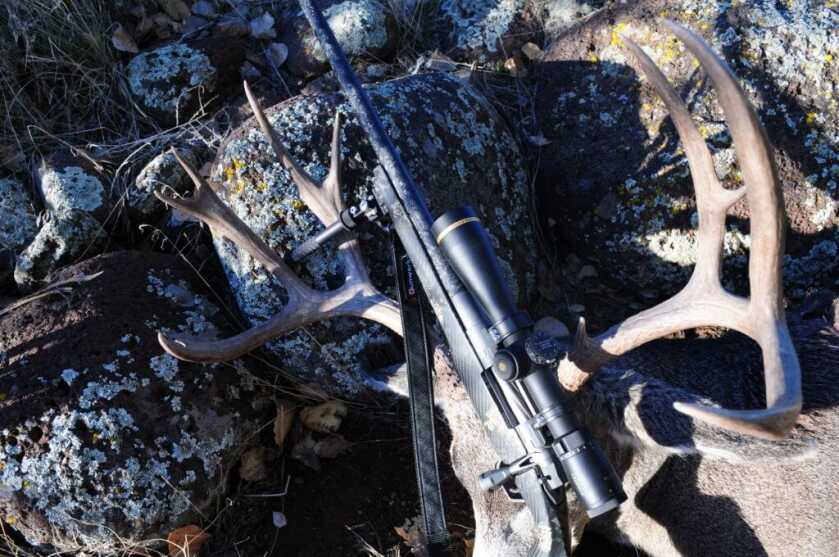
The scope mounted atop your rifle is one of the best hunting scopes available; a Leupold VX6 3-18X44 with CDS ZL2 turret; which means it sports a Compensating Dial System (CDS) and Zero Lock turret that will make two complete rotations (ZL2). After gathering ballistic data with your rifle and ammo you contacted Leupold and ordered a custom yardage-marked dial to match. It was a simple matter to switch the factory turret for the custom edition, and now you can simply range a deer, crank the dial to the corresponding yardage on the turret, and squeeze off a careful shot. It’s an awesome system; you’ve practiced extensively, and in wind-free conditions you’re confident of making a clean kill further away than you like to tell folks. You’re ready; now the big buck just has to make a mistake.
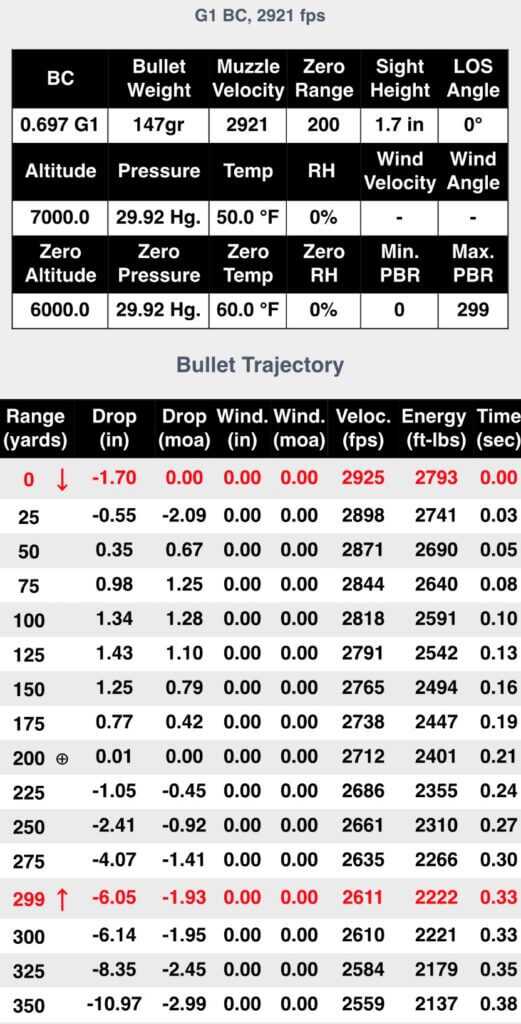
Why I Took The Shot
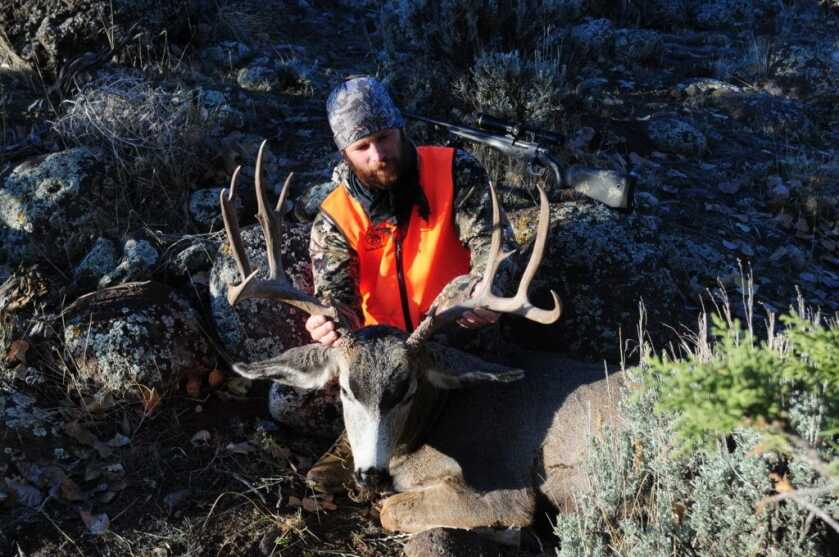
This is a true story. I was the hunter, and events happened exactly as outlined.
Here’s how it played out: When the buck jumped the fence I was ready, crosshairs steady, safety off. I knew that with this rifle, at this distance, I could make a first-shot hit on a British teacup. When the buck stopped to browse I settled my crosshairs for a high-shoulder shot, which would drop him in his tracks and prevent him from dashing back across the border. Then I pressed the trigger. I had my scope adjusted to 9-power to give me a wide field of view, the better to watch my bullet’s impact as the buck dropped in a heap, disappearing into the sage. I worked the bolt and stayed on the spot for a couple minutes just in case he stood up, though I was morally certain he was dead in his tracks. A few minutes later I approached, and found him exactly as anticipated, stretched out in the sage. The bullet had taken him as intended, high through the lungs and both shoulder blades, which imparted colossal shock to the spine and nervous system, dropping him instantly. Terminal performance was excellent.
I gave thanks, took photos, and processed the buck. It was a good hunt, for a great deer, with an awesome rifle. I would take that shot again, anytime and every time.
SUCCESS WAS DETERMINED IN ADVANCE
There is never a certain outcome when hunting but odds for success are greatly improved by managing the variables that are under your control. A great rifle with proven optics and tested ammunition were certainly contributing factors to success. Practice, patience, and documenting ballistics also enhanced the outcome. Accomplished hunters do all of these things and let lady luck have a small part in the game.
I’d love to hear your opinions in the comment section below.



Congratulations, been there myself, 8 point mule added to the boon and crocket book
Thanks Stan! Congrats to you as well!
It is hard to argue with success and I really admire your preparation; you sure earned that buck. My only reservation is in your choice of bullet. I can forgive that since you previously had good luck using it on deer sized animals. I lost a couple of deer many years ago as a result of shooting some superbly accurate match bullets which did not have similarly superb terminal ballistic performance. Bullet design has come a long way since then but I still pick my hunting bullets for their terminal performance.
Congratulations on a well planned, well prepared for hunt!
Thanks Loren. I’m with you on bullet selection. This particular bullet holds together very well, even on a quartered-to shot through the shoulder, on deer-sized animals. (I’ve shot both mule deer and pronghorn this way with superb results). However, I draw the limit on elk. While it is deadly for a broadside shot, I have seen it fail to penetrate into the thorax on a frontal shot on an elk (not mine). The elk did go down rapidly, as everything important in the throat (arteries, jugular, etc.) we’re reduced to mush. Bottom line is, I would chose a stronger bullet, something like Federal’s Terminal Ascent, for hunting elk.
Cheers!
AvB
Great story, I know western hunting is not easy, open country and deer can hide in sage brush and disappear, A 350 yd. shot in a small window of clearing is tough. Congrats on a fine buck. I was fortunate last Oct. in Wyoming, different situation in a chair behind juniper tree, came right at me at 200 yds. bedded down at 50 yds. in sage brush for a hour. He got spooked by my buddy going to the truck , shot him at 25 yds. before he even saw me. need to know what rifle were you using, Leopold CDS is awesome.
Glad you like the article!
Awesome story of your hunt, congrats!
Rifle is a Gunwerks ClymR.
Best, AvB
With the preparation you did and the weapon, you were using, if it had been me I would have done exactly what you did. No substitute for proper planning and being prepared. Beautiful buck and a memory for a lifetime.
Thank you Jim!